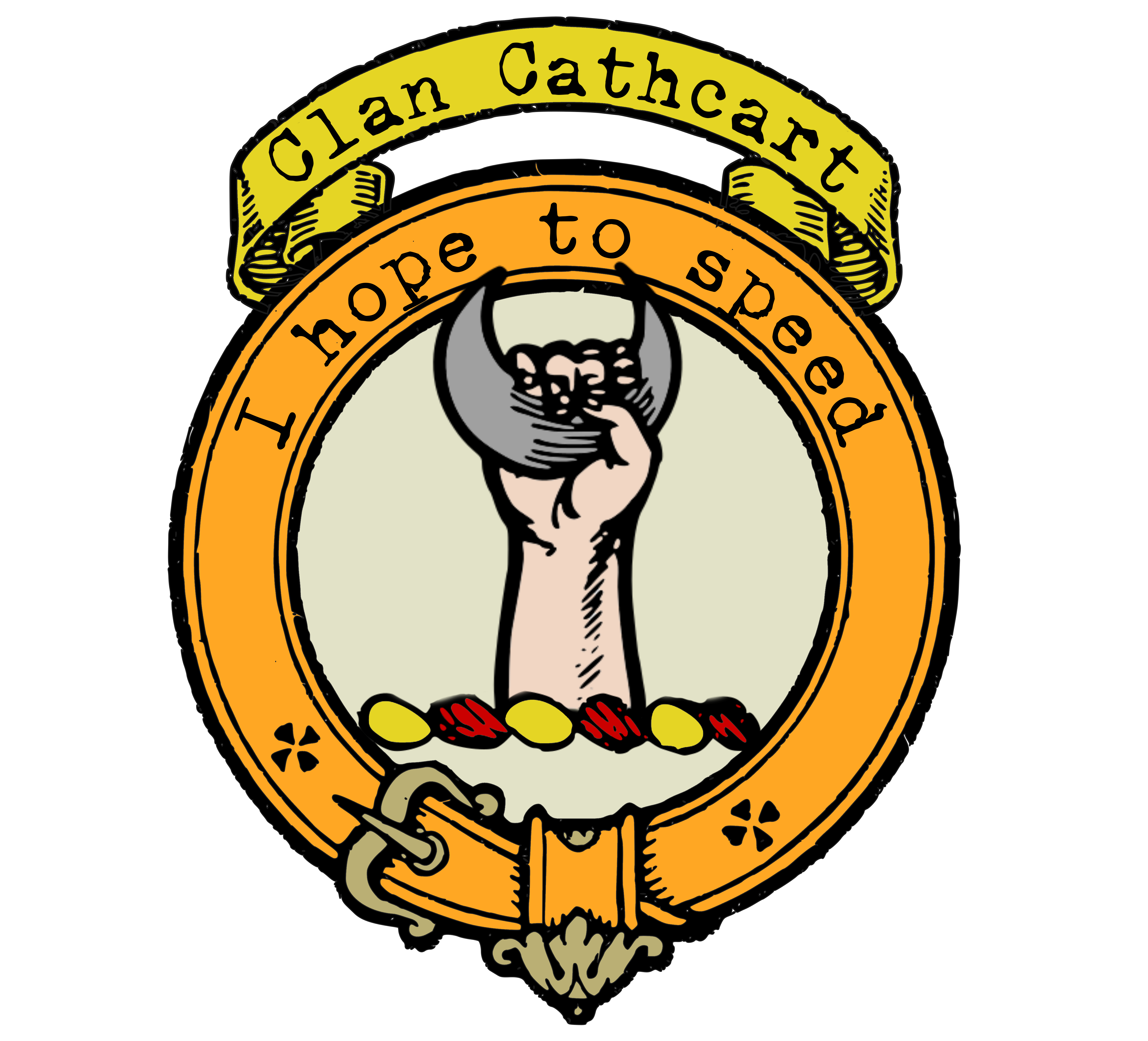Cathcart Clan
|
|
CREST: A dexter hand couped above the wrist and erect Proper, grasping a crescent Argent MOTTO: I hope to speed TRANSLATION: N/A VARIATIONS: N/A |
| The lands of Cathcart take their name from the River Cart in Renfrewshire, Scotland, and have a long and illustrious history. The progenitor of the Cathcart family was Rainaldus de Kethcart, who was witness to a charter of the king’s steward to Paisley Abbey in 1178. The family has a long history of involvement in Scottish politics and military affairs, with many members serving as knights, lords, and commanders.
Sir Alan de Cathcart was a staunch supporter of Robert the Bruce during the War of Independence, and his grandson was raised to the peerage in 1447 with the title of Lord Cathcart. The fourth Lord Cathcart was a prominent Protestant and promoter of the Reformation in the west of Scotland. Charles Cathcart, the eighth Lord, had a distinguished military career, serving as a major in the Scots Grays and later as colonel of the regiment. He was also appointed ambassador to St. Petersburg and earned the nickname “Patch Cathcart” for his insistence on wearing a patch over a scar received at Fontenoy. The tenth Lord Cathcart, William, was also a military man, rising to the rank of lieutenant general and serving as commander-in-chief of the forces in Ireland in 1803. He led a successful siege of Copenhagen in 1807, capturing the Danish fleet and earning additional titles. He was later advanced to the title of Earl Cathcart in 1814. The second Earl Cathcart also had a distinguished military career, serving in the Peninsular War and at the Battle of Waterloo. The Cathcart family has maintained its military traditions throughout its history, and the present chief’s father held the rank of major general. The family’s connection with Russia was also maintained through Frederick Cathcart, who was appointed Minister Plenipotentiary at the Court of St. Petersburg in 1820 and made a Knight of the Russian Order of St. Anne. |
|

 Purchase @ Redbubble
Purchase @ Redbubble
Purchase @ Amazon.com
Purchase @ Amazon.co.uk
